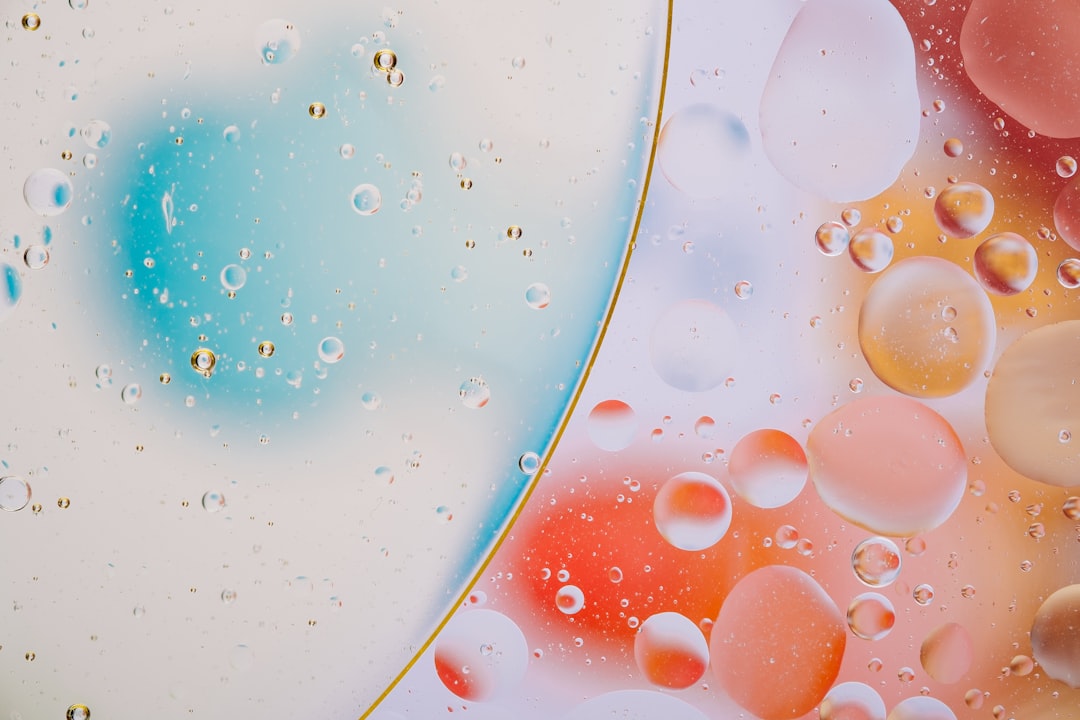What is it about?
In this work, BiOCl, 0.5%, 1%, and 5% Nb2O5/BiOCl (NBO/BCl) composite were prepared by a facile co-precipitation method. The synthesized materials were characterized using various characterization techniques such as XRD, FTIR, Raman, UV–Vis DRS, PL, BET, and TEM. Highlights: • Visible light active Nb2O5/BiOCl composite. • Nb2O5/BiOCl composite synthesized via co-precipitation at room temperature. • Enhanced photocatalytic RhB dye degradation under visible light irradiation. • Enhanced photoelectrochemical responses under visible light irradiation.
Featured Image

Photo by Scottsdale Mint on Unsplash
Why is it important?
The XRD confirms the formation of NBO/BCl composite with no impurities detected. The FT-IR results revealed the successful formation of the NBO/BCl composite, where both functional groups belonging to BiOCl and NBO/BCl were present. The TEM showed that BiOCl and 1% NBO/BCl have irregular nanoplate-like morphology with an average thickness of 22 and 18 nm, respectively. The photocatalytic degradation performance of the BiOCl and NBO/BCl composites was evaluated by degrading Rhodamine B (RhB) dye under visible light irradiation. Among all of the photocatalysts, 1% NBO/BCl showed the highest photocatalytic activity in which it degraded 96.7% of RhB dye in 120 min under visible light irradiation. Furthermore, the photoelectrochemical response of BiOCl and NBO/BCl composites was investigated by linear sweep voltammetry (LSV) and electrochemical impedance spectroscopy (EIS) techniques. The LSV and EIS analysis of NBO/BCl showed enhanced response when exposed to visible light compared to dark conditions. The significant improvement in the photocatalytic and photoelectrochemical performance of NBO/BCl composite was attributed to the synergistic effects of the NBO/BCl which enhanced light absorption abilities and charge carrier transfer making it easier for charge separation by lowering the recombination rate.
Perspectives
In this work, BiOCl, 0.5%, 1%, and 5% Nb2O5/BiOCl (NBO/BCl) composite were prepared by a facile co-precipitation method. The synthesized materials were characterized using various characterization techniques such as XRD, FTIR, Raman, UV–Vis DRS, PL, BET, and TEM. The XRD confirms the formation of NBO/BCl composite with no impurities detected. The FT-IR results revealed the successful formation of the NBO/BCl composite, where both functional groups belonging to BiOCl and NBO/BCl were present. The TEM showed that BiOCl and 1% NBO/BCl have irregular nanoplate-like morphology with an average thickness of 22 and 18 nm, respectively. The photocatalytic degradation performance of the BiOCl and NBO/BCl composites was evaluated by degrading Rhodamine B (RhB) dye under visible light irradiation. Among all of the photocatalysts, 1% NBO/BCl showed the highest photocatalytic activity in which it degraded 96.7% of RhB dye in 120 min under visible light irradiation. Furthermore, the photoelectrochemical response of BiOCl and NBO/BCl composites was investigated by linear sweep voltammetry (LSV) and electrochemical impedance spectroscopy (EIS) techniques. The LSV and EIS analysis of NBO/BCl showed enhanced response when exposed to visible light compared to dark conditions. The significant improvement in the photocatalytic and photoelectrochemical performance of NBO/BCl composite was attributed to the synergistic effects of the NBO/BCl which enhanced light absorption abilities and charge carrier transfer making it easier for charge separation by lowering the recombination rate.
Professor Mohammad Mansoob Khan
Universiti Brunei Darussalam
Read the Original
This page is a summary of: Nb2O5/BiOCl composite as a visible-light-active photocatalyst for the removal of RhB dye and photoelectrochemical studies, Journal of Photochemistry and Photobiology A Chemistry, September 2023, Elsevier,
DOI: 10.1016/j.jphotochem.2023.115177.
You can read the full text:
Resources
Nb2O5/BiOCl composite as a visible-light-active photocatalyst for the removal of RhB dye and photoelectrochemical studies
In this work, BiOCl, 0.5%, 1%, and 5% Nb2O5/BiOCl (NBO/BCl) composite were prepared by a facile co-precipitation method. The synthesized materials were characterized using various characterization techniques such as XRD, FTIR, Raman, UV–Vis DRS, PL, BET, and TEM. The XRD confirms the formation of NBO/BCl composite with no impurities detected. The FT-IR results revealed the successful formation of the NBO/BCl composite, where both functional groups belonging to BiOCl and NBO/BCl were present. The TEM showed that BiOCl and 1% NBO/BCl have irregular nanoplate-like morphology with an average thickness of 22 and 18 nm, respectively. The photocatalytic degradation performance of the BiOCl and NBO/BCl composites was evaluated by degrading Rhodamine B (RhB) dye under visible light irradiation. Among all of the photocatalysts, 1% NBO/BCl showed the highest photocatalytic activity in which it degraded 96.7% of RhB dye in 120 min under visible light irradiation. Furthermore, the photoelectrochemical response of BiOCl and NBO/BCl composites was investigated by linear sweep voltammetry (LSV) and electrochemical impedance spectroscopy (EIS) techniques. The LSV and EIS analysis of NBO/BCl showed enhanced response when exposed to visible light compared to dark conditions. The significant improvement in the photocatalytic and photoelectrochemical performance of NBO/BCl composite was attributed to the synergistic effects of the NBO/BCl which enhanced light absorption abilities and charge carrier transfer making it easier for charge separation by lowering the recombination rate.
Nb2O5/BiOCl composite as a visible-light-active photocatalyst for the removal of RhB dye and photoelectrochemical studies
In this work, BiOCl, 0.5%, 1%, and 5% Nb2O5/BiOCl (NBO/BCl) composite were prepared by a facile co-precipitation method. The synthesized materials were characterized using various characterization techniques such as XRD, FTIR, Raman, UV–Vis DRS, PL, BET, and TEM. The XRD confirms the formation of NBO/BCl composite with no impurities detected. The FT-IR results revealed the successful formation of the NBO/BCl composite, where both functional groups belonging to BiOCl and NBO/BCl were present. The TEM showed that BiOCl and 1% NBO/BCl have irregular nanoplate-like morphology with an average thickness of 22 and 18 nm, respectively. The photocatalytic degradation performance of the BiOCl and NBO/BCl composites was evaluated by degrading Rhodamine B (RhB) dye under visible light irradiation. Among all of the photocatalysts, 1% NBO/BCl showed the highest photocatalytic activity in which it degraded 96.7% of RhB dye in 120 min under visible light irradiation. Furthermore, the photoelectrochemical response of BiOCl and NBO/BCl composites was investigated by linear sweep voltammetry (LSV) and electrochemical impedance spectroscopy (EIS) techniques. The LSV and EIS analysis of NBO/BCl showed enhanced response when exposed to visible light compared to dark conditions. The significant improvement in the photocatalytic and photoelectrochemical performance of NBO/BCl composite was attributed to the synergistic effects of the NBO/BCl which enhanced light absorption abilities and charge carrier transfer making it easier for charge separation by lowering the recombination rate.
Contributors
The following have contributed to this page










